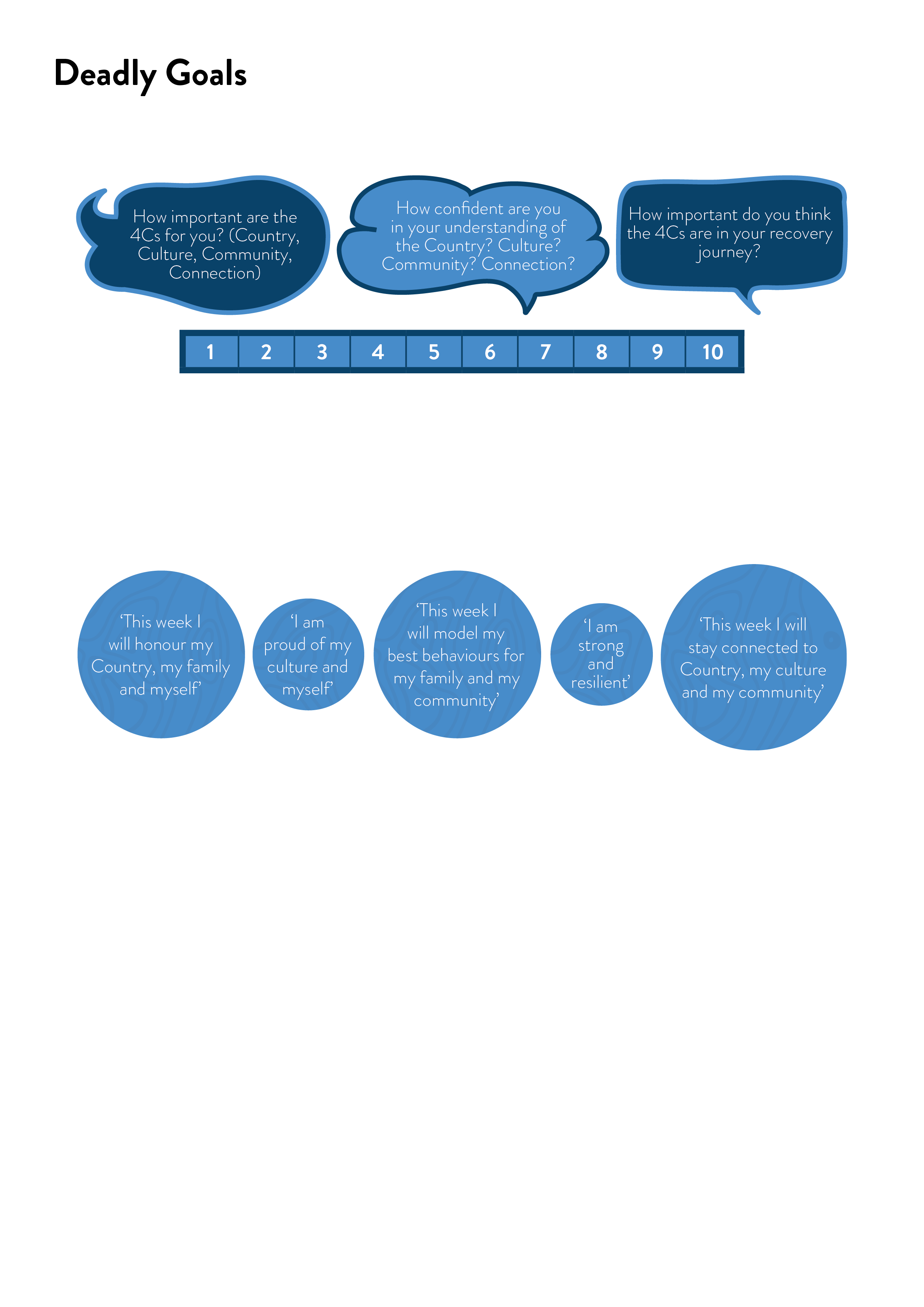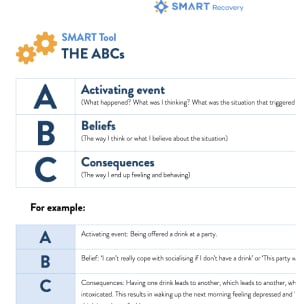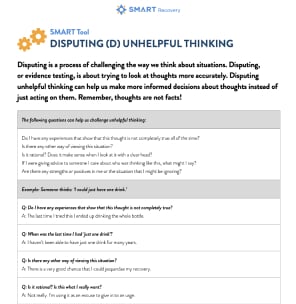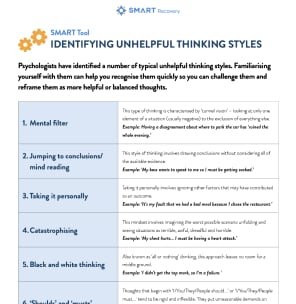Deadly Goals
Tool Overview
Having deadly goals to work towards are important. Setting goals and even trying to visualise your success are great tools that may help you bring your goals to life. Sometimes going on this journey is a lonely one. You may feel isolated and alone. Know that there are many others who are out there going through hard times too. Think about someone you know who made some deadly changes and achieved what you’re hoping to achieve. Think to yourself, if they can do it so can I. Once you’ve set your goals, you may want to try and visualise yourself successfully achieving them. This visualisation technique can inspire and motivate you to stay strong when times get tough.
When To Use This Tool
It can be helpful to weigh up not only how important this goal is to you, but also how confident you feel about being able to achieve the change you want.
Because this change is new, it is normal to lack confidence and have a fear of failure.
Think about some affirmations that may help you set goals and how they may strengthen your connection to Country, Culture, Community, and Connection.
How To Use This Tool
Practising gratitude
Begin each day with a grateful heart. Reflect on the things you are thankful for, no matter how small they may seem. This simple act can foster a positive mindset and attract more blessings your way. Think about your mob, your community, your culture and any other blessings in your life. Practising gratitude can really bring us a sense of joy. You may want to get yourself a gratitude journal or notepad and either write or draw pictures of what you’re grateful for.
Surrounding yourself with people who inspire you
Are there people in your family or community who inspire you and make you feel good? Think of people you can have a laugh with and those who want to see you succeed. We need to make choices about who we surround ourselves with, especially in those early days of change and growth. There may be people or events you feel like you need to avoid for a while until you feel strong enough.Try to surround yourself with those deadly ones who can help you stay motivated to make positive changes you wish to see.
Positive affirmations
Positive affirmations are simply encouraging yourself to get through tough times and telling yourself that you are strong, deadly and that you can do it. When stressful or negative thoughts enter your mind, take a breath, and say, “Let it go” , or try some positive affirmations such as, “I am safe” , “This will pass”. A simple walk or some fresh air is a good strategy to disrupt unhelpful thoughts, however you will know what strategies work best for you.
Other affirmations may include “I’m doing this for my babies” , “I am strong” , “I am in the process of healing and change” , “I am worthy of this change”, “If someone else can do it, then so can I”.
Helpful Links
Related Tools
View all- Tool
Lifestyle Audit
When we slow down on a behaviour of concern, it can leave a gaping hole in our lives. Often, we find that we have a lot more free time, which used to be filled with activities related to our old behaviour. Also, we may no longer associate with the same group of friends.
- Tool
Setting SMART Goals
It’s important to make sure goals are SMART: Specific, Measurable, Achievable, Realistic and Timed.
- Tool
Weekly Planner
Once you have set some specific goals and broken them down into smaller, specific steps, the weekly planner can be useful for keeping these goals on track and ensuring that you are taking active steps towards achieving them.
Tool Overview
The ABC Model is a good way of understanding how we can help change our feelings and behaviour by challenging our thinking.
When to Use This Tool
The ABC Model is a good way of understanding how we can help change our feelings and behaviour by challenging our thinking. It helps us uncover beliefs that are not helping us /contributing to the behaviour we are trying to change.
This exercise may be done in the group setting but can also be very useful for participants to look at between meetings.
How To Use This Tool
When working with urges: To analyze a lapse/relapse or to develop coping statements for an anticipated lapse/relapse.
In the event of a lapse, the question to ask is not “What made me do that”, but rather, “How did I talk myself into it?” It is not the urge (A) that causes the lapse (C). It is our beliefs (B); our irrational self-talk.With emotional upset:
The ABC Model can also be used to work with emotional upset or frustrations that may occur at any point in the recovery journey. The ABCs allow us to discover our unhelpful beliefs which contribute to emotional upsets. Disputing helps us eliminate our irrational thinking so we can both feel better and do better. In SMART Recovery we teach that we feel the way we think; it’s not unpleasant events that disturb us, it’s the way we think of them. By changing our thinking, we change how we feel.Identifying and Disputing Unhelpful Thinking.
Disputing is a process of challenging the way we think about situations. It’s about trying to look at thoughts more accurately. Disputing unhelpful thinking can help us make more informed decisions about thoughts instead of just acting on them. Balanced thinking leads to effective new beliefs.



